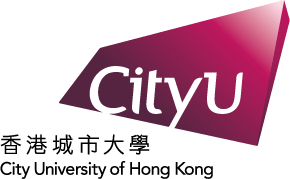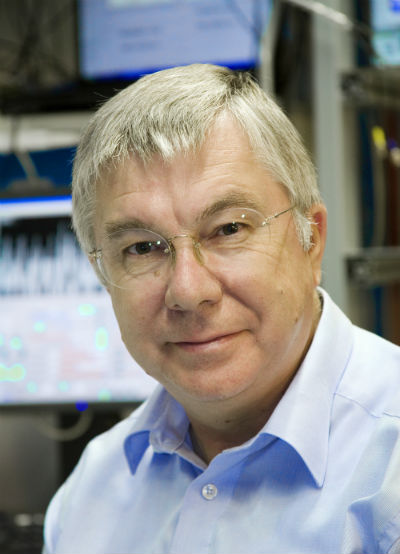
Biography
Professor Rainer Blatt
Institute for Experimental Physics, University of Innsbruck, Austria
Rainer Blatt is Professor of experimental physics at the University of Innsbruck, Austria, and Scientific Director at the Institute for Quantum Optics and Quantum Information (IQOQI) of the Austrian Academy of Sciences (ÖAW). He has carried out trail-blazing experiments in the fields of precision spectroscopy, quantum metrology and quantum information processing. Blatt works with atoms caught in ion traps which he manipulates using laser beams. This work is based on suggestions made in the mid-1990s by theorists Ignacio Cirac and Peter Zoller. In 2004 Blatt’s research group succeeded for the first time in transferring the quantum information of one atom in a totally controlled manner onto another atom (teleportation). Two years later, his group already managed to entangle up to eight atoms in a controlled manner. Creating such a first “quantum byte” was a further step on the way towards a quantum computer. 2011 the team managed to push this record to 14 entangled atoms. Furthermore Rainer Blatt took important steps towards successful quantum error correction and the building of quantum simulators. He has received numerous awards for his achievements in the fields of quantum optics and meteorology. In 2012 the German Physical Society awarded him the Stern-Gerlach-Medaille. Together with Ignacio Cirac he won the 2009 Carl Zeiss Research Award. He also received a Humboldt Research Award (2013) and an ERC Advanced Grant by the European Research Council (2008).
In 2013 the Australian Academy of Science announced Rainer Blatt as the 2013 Frew Fellow. In 2014 he was awarded the “Tiroler Landespreis für Wissenschaft 2014” (science award of the state of Tyrol) and in 2015 the Stewart Bell Prize for Research on Fundamental Issues in Quantum Mechanics and Their Applications
Rainer Blatt is full member of the Austrian Academy of Sciences.
The quantum way of doing computations
Since the mid-nineties of the 20th century, it became apparent that one of the centuries’ most important technological inventions, computers in general and many of their applications could possibly be further enhanced by using operations based on quantum physics. This is timely since the classical roadmap for the development of computational devices, commonly known as Moore’s law, will cease to be applicable within the next decade. This is due to the ever-smaller sizes of the electronic components that will enter the realm of quantum physics. Computations, whether they happen in our heads or with any computational device, always rely on real physical devices and processes. Data input, data representation in a memory, data manipulation using algorithms and finally, data output require physical realizations with devices and practical procedures. Building a quantum computer then requires the implementation of quantum bits (qubits) as storage sites for quantum information, quantum registers and quantum gates for data handling and processing as well as the development of quantum algorithms.
In this talk, the basic functional principle of a quantum computer will be reviewed. It will be shown how strings of trapped ions can be used to build a quantum information processor and how basic computations can be performed using quantum techniques. In particular, the quantum way of doing computations will be illustrated with analog and digital quantum simulations, which range from the simulation of quantum many-body spin systems over open quantum systems to the quantum simulation of a lattice gauge theory.
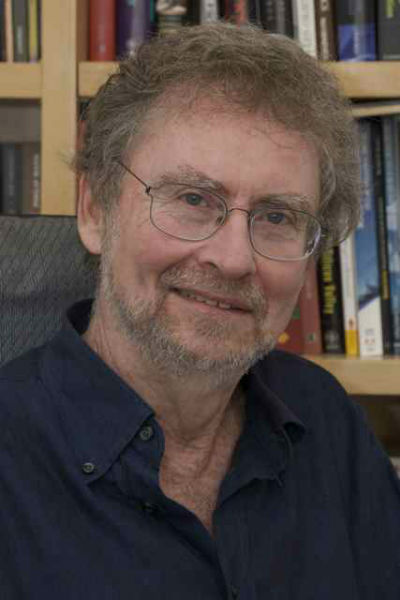
Biography
Professor Luiz Davidovich
Instituto de Física, Universidade Federal do Rio de Janeiro, Brazil
Luiz Davidovich is Professor of Physics at the Federal University of Rio de Janeiro. He got his Ph. D. at the University of Rochester in 1976, and has worked since then in quantum optics and quantum information. His major contributions are in the topics of decoherence, entanglement, laser theory, and quantum metrology. He was awarded the Brazilian Grand-Cross of the National Order of Scientific Merit in 2000, the 2001 Physics Prize of The World Academy of Sciences (TWAS), and the most important prize for science in Brazil, the Admiral Alvaro Alberto prize, awarded by the Brazilian National Research Council in 2010. He is fellow of the Optical Society of America and of the American Physical Society, and Foreign Associate of the National Academy of Sciences (USA). He has been President of the Brazilian Academy of Sciences since 2016.
Emergence of the classical world from quantum physics: Schrödinger cats, entanglement, and decoherence
The emergence of the classical world from quantum mechanics is a subtle problem, which was raised by Schrödinger in one of his papers in 1926 [1], and to which he came back in a paper in 1935 [2], containing the famous discussion on the possibility of existence of coherent superpositions of classically distinguishable states of macroscopic systems ("Schrödinger cat").
A closely related question concerns the dynamics of entangled systems under the action of the environment. What is the dynamical law? How does it scale with the number of particles? How robust is the entanglement, as the number of particles increases? These questions are not only important from a conceptual point-of-view, but may play an important role in the assessment of the robustness of quantum computers, since entanglement seems to be an important resource for many quantum computation tasks.
The development of new concepts and new techniques for the precise manipulation of single atoms and photons has led to the detailed experimental investigation of these questions. This talk will review recent work, theoretical [3,4] and experimental [5-8], addressing these questions. For reviews, see [9,10].
[1] E. Schrödinger. The continuous transition from micro to macro-mechanics. Die Naturwissenschaften 28, 664 (1926).
[2] E. Schrödinger. Die gegenwärtige Situation in der Quantenmechanik. Die Naturwissenschaften, 23, 807 (1935).
[3] L. Aolita, R. Chaves, D. Cavalcanti, A.Acín, and L. Davidovich. Scaling laws for the decay of multiqubit entanglement. Phys. Rev. Lett. 100, 080501 (2008).
[4] Daniel Cavalcanti, Rafael Chaves, Leandro Aolita, Luiz Davidovich, and Antonio Acín, Opensystem dynamics of graph-state entanglement. Phys. Rev. Lett. 103, 030502 (2009).
[5] M. P. Almeida, F. de Melo, M. Hor-Meyll, A. Salles, S. P. Walborn, P. H. Souto Ribeiro, and L. Davidovich. Environment-induced sudden death of entanglement. Science 316, 579 (2007).
[6] O. Jiménez Farías, C. Lombard Latune, S. P. Walborn, L. Davidovich, and P. H. Souto Ribeiro. Determining the dynamics of entanglement. Science 324, 1414 (2009).
[7] O. Jiménez Farías, G. H. Aguilar, A. Valdés-Hernández, P. H. Souto Ribeiro, L. Davidovich, and S. P. Walborn, Observation of the emergence of multipartite entanglement between a system and its environment. Phys. Rev. Lett. 109, 150403 (2012).
[8] G. H. Aguilar, A. Valdés-Hernández, L. Davidovich, S. P. Walborn, and P. H. Souto Ribeiro, Experimental entanglement redistribution under decoherence channels, Phys. Rev. Lett. 113, 240501 (2014).
[9] Leandro Aolita, Fernando de Melo and Luiz Davidovich, Open-system dynamics of entanglement: a Key Issues Review, Rep. Prog. Phys. 78, 042001 (2015).
[10] L. Davidovich, Physica Scripta 91, 063013 (2016).
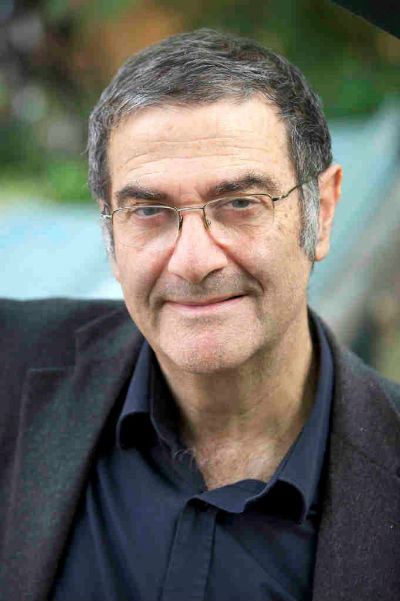
Biography
Professor Serge Haroche
2012 Nobel Laureate in Physics
Collège de France, France
Institute for Advanced Study, City University of Hong Kong, Hong Kong
Serge Haroche was born in 1944 in Casablanca. He graduated from Ecole Normale Supérieure (ENS), receiving his doctorate from Paris VI University in 1971 (thesis advisor: Claude Cohen-Tannoudji). After a post-doctoral visit to Stanford University in the laboratory of Arthur Schawlow (1972-73), he became full professor at Paris VI University in 1975, a position he held until 2001, when he was appointed Professor at Collège de France (in the chair of quantum physics). He has also been Maître de Conference at Ecole Polytechique (1974-1984), visiting professor at Harvard (1981), part time professor at Yale University (1984-1993), member of Institut Universitaire de France (1991-2000) and chairman of the ENS Department of Physics (1994-2000). In September 2012, he has been appointed “Administrateur du Collège de France” (equivalent to President of this institution), a position he held until September 2015. Since then, he is Professor Emeritus at Collège de France.
Serge Haroche’s research has mostly taken place in the laboratory Kastler Brossel at ENS, where he works with a team of senior coworkers, postdocs and graduate students. His main research activities have been in quantum optics and quantum information science. He has made important contributions to Cavity Quantum Electrodynamics (Cavity QED), the domain of quantum optics which studies the behaviour of atoms interacting strongly with the field confined in a high-Q cavity, a box made of highly reflecting mirrors. An atom-photon system isolated from the outside world by metallic walls realizes a very simple experimental model which Serge Haroche has used to test fundamental concepts of quantum physics such as state superposition, entanglement, complementarity and decoherence. Some of these experiments are actual realizations in the laboratory of the “thought experiments” imagined by the founding fathers of quantum mechanics. Serge Haroche’s main achievements in cavity QED include the observation of single atom spontaneous emission enhancement in a cavity (1983), the direct monitoring of the decoherence of mesoscopic superpositions of states (so-called Schrödinger cat states) (1996) and the quantum-non-demolition counting of photons (2007). By manipulating atoms and photons in high-Q cavities, he has also demonstrated elementary steps of quantum information procedures such as the generation of atom-atom and atom-photon entanglement (1997) and the operation of quantum logic gates involving photons and atoms as “quantum bits” (1999).
Serge Haroche has received many prizes and awards, culminating in the 2012 Nobel Prize in physics, shared with David J. Wineland. Other awards include the Grand Prix Jean Ricard of the French Physical Society (1983), the Einstein Prize for Laser science (1988), the Humbold Award (1992), the Michelson Medal from the Franklin Institute (1993), the Tomassoni Award from La Sapienza University (Rome, 2001), the Quantum Electronics prize of the European Physical Society (2002), the Quantum Communication Award of the International Organization for Quantum Communication, Measurement and Computing (2002), the Townes Award of the Optical Society of America (2007), the CNRS Gold Medal (2009) and the Herbert Walther Prize of the German Physical Society and the Optical Society of America (2010). Serge Haroche is a member of the French and European Academies of Sciences. He is a Foreign Member of the National Academy of Sciences of the United States, of the American Academy of Arts and Sciences, and of the Brazilian, Colombian and Moroccan Academies of Sciences. He is Doctor Honoris Causa of the Weizmann Institute and of the Universities of Montreal, Patras, Strathclyde and Bar Ilan.
Manipulation, measurement and control of simple quantum systems
Individual quantum systems - atoms in traps, photons in cavities, artificial structures involving superconducting circuits or quantum dots... - can now be manipulated with exquisite sensitivity, using methods often borrowed from quantum optics. Under different disguises, these systems can be modelled as simple oscillators or angular momenta whose evolution is controlled with precision. Various kinds of non-classical states - including the so called Schrödinger cats which are quantum superpositions of states with different classical attributes - can be generated and their properties exploited in various ways for possible applications to quantum information science. Several examples of the fascinating physics consisting in juggling with oscillators and angular momenta will be described, providing an introduction for other contributions to this workshop.

Biography
Professor Jean-Michel Raimond
Université Pierre et Marie Curie, Laboratoire Kastler Brossel, France
Collège de France, France
Jean-Michel Raimond has been a student at Ecole Normale Supérieure, from 1975 to 1979. He defended his “thèse de troisième cycle”, supervised by S. Haroche, in 1979. He continued his research work on the radiative properties of Rydberg atoms in the Laboratoire de Spectroscopie Hertzienne (ENS), renamed Laboratoire Kastler Brossel. He got his “Doctorat d’Etat” in 1984. He is, since 1998, professor of physics in Université Pierre et Marie Curie. He has been a member of the Institut Universitaire de France from 1994 to 1999 (Junior chair), and from 2001 to 2011 (Quantum Optics senior chair). He has been the director of the ENS physics department from 2005 to 2009. He is now lead editor of the open-acccess high visibility journal Physical Review X.
JM Raimond has developed cavity quantum electrodynamics experiments using mainly circular Rydberg atoms and high-quality superconducting millimeter-wave cavities. These experiments implement the simplest matter-field systems, a single two-level atom interacting with the field of a few photons contained in a single mode of the radiation field. They make it possible to realize some of the gedankenexperiments imagined by the founding fathers of the quantum theory. Their results directly illustrate the most basic features of the quantum world. In particular, J.M. Raimond took part in the first experiment revealing the spontaneous emission modification for a single atom in a cavity. He has realized the first quantitative exploration of the decoherence of a mesoscopic quantum superposition as well as pioneering quantum logic operations. More recently, he performed the first ideal measurement of the number of photons in a box, revealing for the first time the quantum jumps of light. He has used this method to explore in depth the decoherence process and to realize the stabilization of a non-classical state by the first continuous quantum feedback procedure.
Quantum measurement and simulation with Rydberg atoms
Rydberg atoms are very sensitive to external fields. They are thus ideal systems for the realization of quantum-enabled sensors. We realized an electrometer based on "Schrödinger cat" Rydberg states. The sensitivity, reaching the Heisenberg Limit, is such that an atomic sample could detect a single electron at a 90 µm distance in 1 µs, leading to interesting perspectives for charge measurements in mesoscopic physics. The field time correlation function is also accessible, with a MHz bandwidth. We develop a quantum magnetometer based on a superposition of circular states with opposite magnetic moments.
The strong dipole-dipole interactions between Rydberg atoms can be used to realize quantum simulations of many-body problems. We propose a quantum simulator, based on laser-trapped circular Rydberg atoms, protected from spontaneous emission, with lifetimes in the minute range. The dipole-dipole interaction implements a XXZ nearest-neighbor spin-1/2 Hamiltonian. All its parameters are under control. This flexible simulator of spin ensembles is able to follow their evolution over extremely long times.
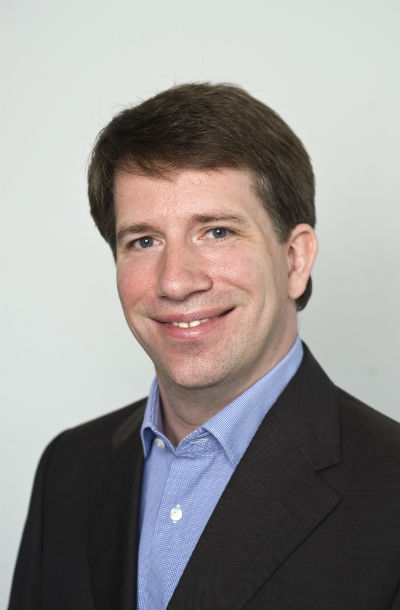
Biography
Professor Arno Rauschenbeutel
Vienna Center for Quantum Science and Technology, Atominstitut, TU Wien, Austria
Arno Rauschenbeutel was born in Düsseldorf, Germany, 1971. During his Ph.D., he worked on cavity quantum electrodynamics with Rydberg atoms in the group of S. Haroche at Ecole Normale Supérieure, Paris, France, and obtained his Ph.D. degree from the Université Paris VI, France, in 2001. He was a senior scientist in the group of D. Meschede at the University of Bonn, Germany, a full professor at the University of Mainz, Germany, and is currently director and chair for applied quantum physics at the Atominstitut, TU Wien, Vienna, Austria. He is a founder member of the Vienna Center for Quantum Science and Technology. His research interests include experimental quantum optics, nanophotonics, hybrid quantum systems, optical nanofibers, and optical microresonators. Arno Rauschenbeutel received a Marie Curie Excellence Award (EC), a European Young Investigators Award (ESF), a Lichtenberg-Professorship (Volkswagen-Foundation), an ERC Consolidator Grant, and an Alexander von Humboldt Professorship (Alexander von Humboldt Foundation).
Chiral quantum optics
Controlling the interaction of light and matter is the basis for diverse applications ranging from light technology to quantum information processing. Nowadays, many of these applications are based on nanophotonic structures. It turns out that the confinement of light in such nanostructures imposes an inherent link between its local polarization and its propagation direction, also referred to as spin–momentum locking of light [1]. Remarkably, this leads to chiral, i.e., propagation direction-dependent effects in the emission and absorption of light, and elementary processes of light–matter interaction are fundamentally altered [2]. For example, when coupling plasmonic particles or atoms to evanescent fields, the intrinsic mirror symmetry of the particles’ emission can be broken. In our group, we observed this effect in the interaction between single rubidium atoms and the evanescent part of a light field that is confined by continuous total internal reflection in a whispering-gallery-mode microresonator [3]. In the following, this allowed us to realize chiral nanophotonic interfaces in which the emission direction of light into the structure is controlled by the polarization of the excitation light [4] or by the internal quantum state of the emitter [5], respectively. Moreover, we employed this chiral interaction to demonstrate an integrated optical isolator [6] as well as an integrated optical circulator [7] which operate at the single-photon level and which exhibit low loss. The latter are the first two examples of a new class of nonreciprocal nanophotonic devices which exploit the chiral interaction between single quantum emitters and transversally confined photons.
[1] K. Y. Bliokh, F. J. Rodríguez-Fortuño, F. Nori, and A. V. Zayats, Spin-orbit interactions of light, Nat. Photon. 9, 796 (2015).
[2] P. Lodahl, S. Mahmoodian, S. Stobbe, A. Rauschenbeutel, P. Schneeweiss, J. Volz, H. Pichler, and P. Zoller, Chiral Quantum Optics, Nature 541, 473, (2017).
[3] C. Junge, D. O'Shea, J. Volz, and A. Rauschenbeutel, Strong coupling between single atoms and non-transversal photons, Phys. Rev. Lett. 110, 213604 (2013).
[4] J. Petersen, J. Volz, and A. Rauschenbeutel, Chiral nanophotonic waveguide interface based on spin-orbit coupling of light, Science 346, 67 (2014).
[5] R. Mitsch, C. Sayrin, B. Albrecht, P. Schneeweiss, and A. Rauschenbeutel, Quantum state-controlled directional spontaneous emission of photons into a nanophotonic waveguide, Nature Commun. 5, 5713 (2014).
[6] C. Sayrin, C. Junge, R. Mitsch, B. Albrecht, D. O'Shea, P. Schneeweiss, J. Volz, and A. Rauschenbeutel, Nanophotonic Optical Isolator Controlled by the Internal State of Cold Atoms, Phys. Rev. X 5, 041036 (2015).
[7] M. Scheucher, A. Hilico, E. Will, J. Volz, and A. Rauschenbeutel, Quantum optical circulator controlled by a single chirally coupled atom, Science 354, 1577 (2016).
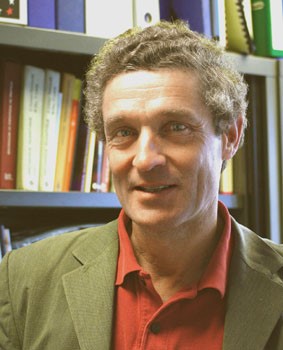
Biography
Professor Christophe Salomon
Laboratoire Kastler Brossel, Ecole Normale Supérieure, France
Christophe Salomon obtained his PhD in 1984 at Paris 13 University (France) on high resolution laser spectroscopy in the infrared domain. He moved for his post-doc to JILA (USA), where he worked with J. Hall on ultra-stable lasers and laser cooling of atoms. In 1985, He joined the laser cooling group just created by C. Cohen-Tannoudji and A. Aspect at Ecole Normale supérieure (Paris, France). Since then at ENS, Christophe Salomon worked on various developments and applications of cold atoms, notably atomic fountain clocks, optical lattices, Bose-Einstein condensation and ultracold Fermi gases. As Research Director at CNRS, he is Head of the cold Fermi gas group at ENS and Principal Investigator for the ACES/PHARAO space clock Mission of the European Space agency and French Space Agency. His current research interests range from superfluidity in quantum gases to high precision measurements and fundamental physics tests with space clocks. Christophe Salomon has published over 180 papers and, for his research, he received several prizes and awards, including the Alexander von Humboldt prize, the Louis D. prize of the Institut de France, the "Three physicists" prize, the Mergier-Bourdeix Prize of the French Academy of Sciences, the European Time and Frequency Prize, the Philip-Morris Prize, and the Young Scientist prize of the French ministry of defence. Christophe Salomon is also Fellow of the American Physical Society and a member of the European Physical Society.
Dual Bose-Fermi superfluids
We will report on the production and study of a mixture of Bose and Fermi superfluids. Such a mixture has long been sought in liquid helium where superfluidity was achieved separately in bosonic 4He and fermionic 3He. However due to strong interactions between isotopes, phase separation occurs when the 3He concentration exceeds 6%, which, so far, has prevented reaching simultaneous superfluidity for both species.
Using dilute quantum gases where interactions can be tuned, we have produced a Bose-Fermi mixture where both species are superfluid [1]. By exciting center of mass oscillations of the mixture we probe the collective dynamics of the system. Coherent energy exchange between the Bose and Fermi gas is observed with very small damping below a certain critical velocity. We compare this critical velocity for superfluid counterflow to a recent theoretical prediction [2,3]. Raising the temperature of the system slightly above the superfluid transition reveals an unexpected phase-locking of the oscillations induced by dissipation. Finally we show theoretically and experimentally that the lifetime of the Bose-Fermi mixture in the limit of small interspecies coupling is simply proportional to Tan’s fermionic contact, a universal quantity that gives the probability of having two fermions close to each other [4].
[1] Igor Ferrier-Barbut, Marion Delehaye, Sebastien Laurent, Andrew T. Grier, Matthieu Pierce, Benno S. Rem, Frédéric Chevy, Christophe Salomon, A Mixture of Bose and Fermi Superfluids, Science 345, 1035, (2014).
[2] Y. Castin, I. Ferrier-Barbut, and C. Salomon, The Landau critical velocity for a particle in a Fermi superfluid, Comptes Rendus Physique, 16, 241 (2015).
[3] M. Delehaye, S. Laurent, I. Ferrier-Barbut, S. Jin, F. Chevy, and C. Salomon, Critical Velocity and Dissipation of an ultracold Bose-Fermi Counterflow, Phys. Rev. Lett., 115, 265303 (2015).
[4] S. Laurent, M. Pierce, M. Delehaye, T. Yefsah, F. Chevy, C. Salomon, Connecting few-body inelastic decay to quantum correlations in a many-body system : a weakly coupled impurity in a resonant Fermi gas, Phys. Rev. Lett., 118, 103403 (2017).
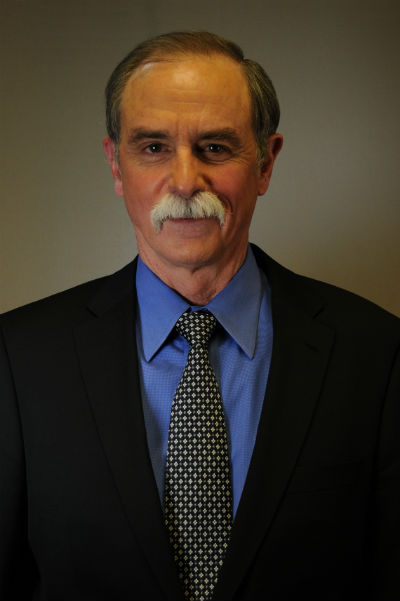
Biography
Professor David J. Wineland
2012 Nobel Laureate in Physics
National Institute of Standards and Technology (NIST), Boulder, Colorado, US *
* NIST work funded by IARPA, ONR, and the NIST quantum information program.
David J. Wineland received a BA degree from the University of California, Berkeley in 1965 and a Ph.D. from Harvard University in 1970. He has been a member of the Time and Frequency Division of NIST (National Institute of Standards and Technology) in Boulder, Colorado since 1975, where he is a group leader and NIST Fellow. Starting with graduate school, a long-term goal of his work has been to increase the precision of atomic spectroscopy. This research has applications to making better atomic clocks and has led to experiments showing precise control of the energy levels and motion of atoms. Such control is now being applied to measurements whose precision is limited only by the constraints of quantum mechanics and to demonstrations of the basic building blocks of a quantum computer.
Further applications, practical problems, and routes toward scaling with trapped-ion qubits
Along with some other technologies, trapped-ions are a promising platform for quantum computation and simulation. Additional applications include quantum-enhanced sensitivity and quantum-limited detection. To realize these goals, we must reduce errors due to insufficient classical control and unwanted perturbations from environmental effects. To handle complex problems, we must also find a way to scale current implementations to larger size. Current efforts to address these issues are described and a brief comparison of trapped ions with other promising technologies is made.
